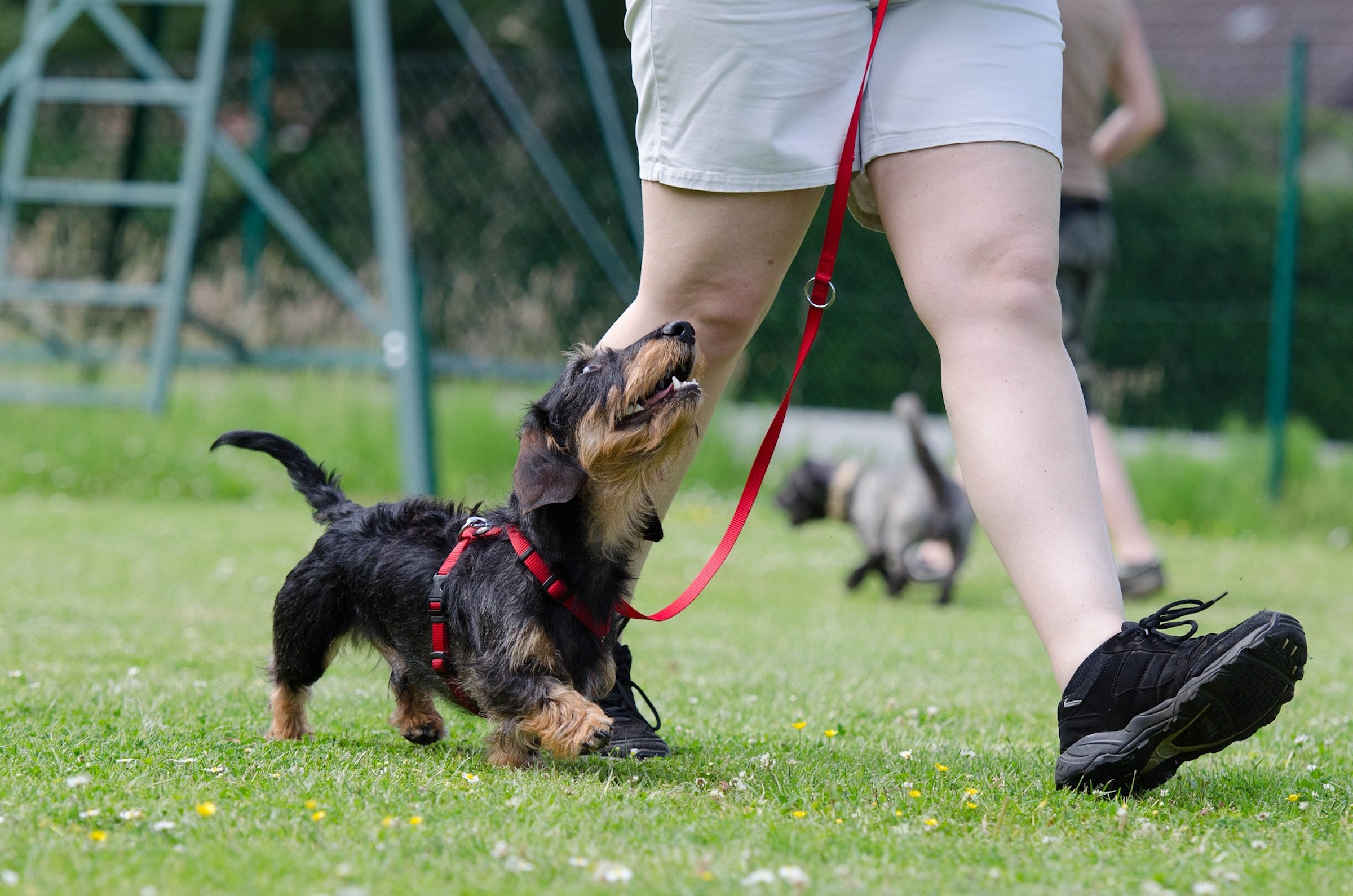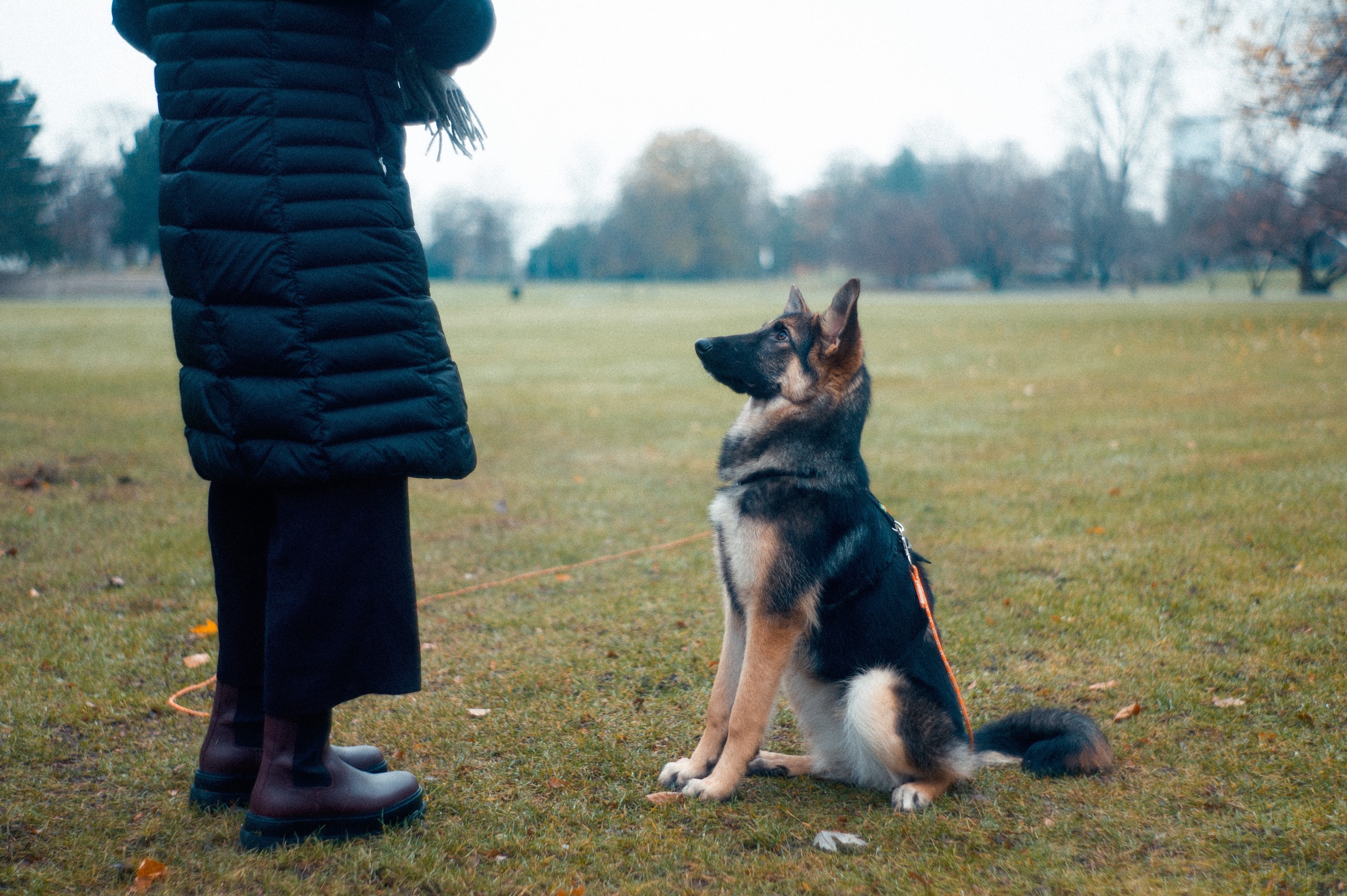Whether you’re a newbie dog owner or a seasoned member of the pack, you’ve probably heard about the importance of obedience training for dogs. Still, there are some misconceptions about dog obedience training and how to tell whether your pup would benefit from it. We’ll give you a hint: Any dog can use a training refresher!
If you need a little more convincing, though — these are five important reasons why you should continue obedience training with your dog. Even if they already know their basic commands, there’s a lot you both can learn. Luckily, you can start right here!

1. One of the first steps to raising a sociable dog is obedience training
Whether you’re bringing home a new puppy, adopting from the shelter, or giving your old friend a refresher, you’ll almost always end up with a more polite dog after their obedience training. At the very least, you’ll be able to show them how to be polite! When a pup can respond to commands like “down” or “wait,” you’ll be able to avoid many unexpected encounters. After all, not everyone you meet will love a dog jumping on them.
Learning a few basic commands gives you and your dog invaluable tools that you can use for life. Just imagine what it would be like if your pup didn’t listen to “sit” or “stay!”

2. Basic dog obedience training is necessary for a pup to excel off-leash
If you want to take your dog’s excellent manners a step further, obedience training can help them learn to walk off-leash like a champ. In fact, verbal recall — aka the ability for your dog to come back to you when you call them — is a requirement for a dog to be off-leash at some public locations. At the very least, it’s essential for everyone’s safety (human and animal).
Although most pet experts recommend starting dog obedience training with basic commands like “sit” and “down,” you’ll need to take it to the next level for off-leash perfection. You’ll want to master something like “no” or “down” to stop unwanted behaviors, and your pup should be able to come when called. The next step, of course, will be keeping your dog focused on training while other people or animals are around.
3. Obedience training can help a dog (and their owner) build confidence
Not only does obedience training keep everyone safe, but it also helps everyone feel more confident. Your furry friend will love all the praise and treats they get for succeeding in commands (positive reinforcement works wonders) as well as the new, fun things they get to try with you. And the more you help them succeed, the more confident they’ll become!
As you can imagine, it can feel like a dream come true to reach new milestones with your best furry friend. Remember — you’re the one helping them learn and thrive. That means you’ll be reaching milestones, too, which is nothing to shrug at. Don’t forget to congratulate yourself as well as your pup on every job well done.

4. Obedience training for dogs provides mental stimulation for high-energy pets
Dog obedience training is a lot more than “sit” and “stay.” Sure, everyone has to start with the basics at one point, but once you’ve mastered level one, things get truly interesting. You can focus your training on your dog’s specific needs — even if it means using training as a means of exercise.
High-energy dogs, such as herding or hunting breeds, can also get a lot of mental stimulation out of training. These pups love to please, so what better way to entertain them? Even practicing basic commands can be stimulating if you switch them up enough. You can even offer different rewards to keep them on their toes — just make sure to keep them motivated and feeling successful.

5. You can strengthen your bond with your dog by training together
While you and your pup are working on obedience training, you probably haven’t even noticed — you’ve been bonding, too! Every time you reward your pup, whether through praise or treats, you’re showing your buddy consistency, care, and love. As long as you stay on top of your training, your furry friend will learn how great it is to listen to you. Before you know it, commands and recall will be a cinch!
To make sure you and your buddy are strengthening your bond, use positive reinforcement only. Negativity, such as yelling or leash pulling, will only result in confusion and concern. Instead, focus on everything your dog is doing right. They will learn that it’s safe to make mistakes around you, which will make them even more likely to succeed. Sounds like a win-win, right?
Whether you feel like your dog has room to improve when it comes to training, it won’t hurt to give it another shot. Think of it like a game for the two of you to play together — just don’t forget the treats! Even if you’re reviewing basic commands that your buddy already knows, there’s always something to gain from continuing with dog obedience training.




